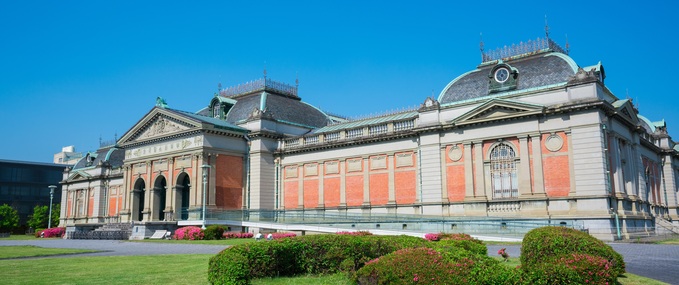Dig deep into Japanese culture and history at the Kyoto National Museum, one of the best Kyoto museums for locals and foreign visitors alike.
Table of contents:
One of the many reasons so many international travellers are drawn to the city of Kyoto is its sense of history and culture. While this can be explored through the city’s palaces and temples, another excellent option is to pay a visit to the Kyoto National Museum.
Arguably the best museum in Kyoto, this major cultural institution is home to a profound range of exhibits that touch on many aspects of Japanese culture and tradition. If you really want to learn about Japan, its past and its art, there’s no better place to visit than this superb Kyoto museum. So if you’re thinking of adding the Kyoto National Museum to your trip while using your Japan Rail Pass, here’s all you need to know to get the most from the experience. A Brief Background to the Kyoto National Museum
Upon first opening back in 1897, the <a href="https://www.kyohaku.go.jp/eng/index.html">Kyoto National Museum</a> was actually known as the Imperial Museum of Kyoto. This makes it one of the oldest museums in Japan and as such has earned quite the distinguished reputation over the years.
The original name for the museum also indicates part of its original purpose, which was to house pieces from the imperial collection, as well as items owned by temples and shrines across the country. It’s only since 2001 that the museum has been known as the Kyoto national Museum, making it one of four national museums in Japan.
Other aspects of the museum have changed too over the years, including its collections and its buildings. These days, most of the collection is on loan from elsewhere rather than being exclusively part of the museum’s own repository.
As for its venue, the museum underwent a major change and expansion with the introduction of the modern Heisei Chishinkan Wing when it opened in 2014. Designed by Taniguchi Yoshio, it represents quite a contrast to the red-brick main hall building it replaced and offers three floors for the museum’s permanent collection.
What to See at the Kyoto National Museum

Although the Kyoto National Museum has a broad focus on pre-modern Japanese and Asian art, its exhibits cover a wonderful range of mediums, eras and themes. This means meaning there’s something for everyone here, especially with a revolving door of special exhibitions. All told, the museum is home to over 12,000 works, with around half of that on display.
Generally speaking, the permanent exhibits fall into three main themes: fine arts, handicraft and archaeology.
Fine Arts
Really the largest portion of exhibits in the museum relate to fine art, from paintings to calligraphy and sculptures. Its painting exhibitions are separated into individual sections on Chinese, Medieval, Edo Period and religious paintings, with some fascinating pieces on samurai culture, Buddhism and the Kami (or deities) of Shinto. With its calligraphy collection, the museum delves into the history and meaning of this art form, to give visitors a deeper appreciation of the form beyond its beauty.
Handicrafts
With its traditional handicraft offerings, the museum presents exhibits on lacquerware, metalwork, textiles and costumes, and ceramics. Preservation is a strong focus for both the lacquerware and metalwork exhibits, whereas technique and patterns take on more significance in the textile and ceramic sections. There is some fascinating patterns, trends and diversity in the clothing, particularly with the religious ceremonies and kimonos on display. Also don’t miss the ancient Chinese ceramics, including pretty horse figurines from the 8th century.
Archaeology
Although there are items of historical interest scattered through all the different museum exhibits, the “Archaeological Relics” thematic exhibition is purely dedicated to these artefacts. Much of its collection involves relates to ceramic figurines and other historic stoneware and pottery. The other historic artefacts in the museum include preserved items from Shinto shrines and Buddhist temples, as well as great pieces like a complete set of samurai armour.
Tips for Visiting the Kyoto National Museum
- Kyoto National Museum is open from 9:30 to 17:00, with entry possible up until 16:30. The museum is closed Mondays, public holidays and when transitioning between exhibitions.
- The entry fee for the permanent exhibition of the museum in 700 yen, while tickets to its special exhibitions vary from one to the next.
- Please note that photography is not allowed inside the Kyoto National Museum, as is often the case in the city.
- For travellers interested in experiencing other cultural attractions in Kyoto, we suggest you look at these articles on the Silver Pavilion and the Sumiyoshi Taisha Shrine.
Visiting the Kyoto National Museum with the JR Pass





